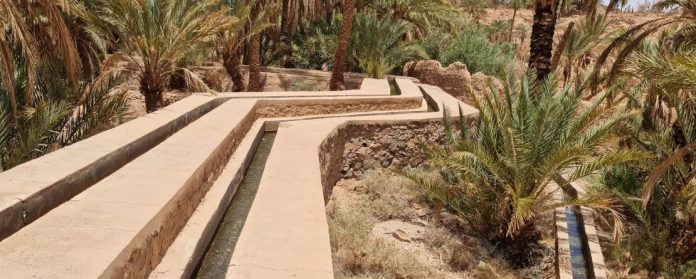Nestled in a lush oasis amid the arid landscapes of southeastern Morocco, the ksour of Figuig stand as remarkable testaments to human ingenuity and resilience. These centuries-old fortified villages reflect a unique architectural identity shaped by generations, blending cultural influences and adapting seamlessly to the harsh desert environment.
Located in the far south of the Oriental region, Figuig is home to seven historic ksour, known locally as Loudaghir, Laabidate, Ouled Slimane, Lamaïz, Hammam Fougani, Hammam Tahtani, and Zenaga. Far from being mere clusters of dwellings, these ksour have long been at the heart of social and commercial life in the region. They tell stories of coexistence between various tribes, where Amazigh and Arab cultures intertwine with a distinctive Saharan influence, creating a rich cultural mosaic.
The ksour of Figuig are distinguished by their authentic and functional architectural style, which highlights the distinctive character of Moroccan oases. Unlike other desert settlements, they maintain original features such as small marketplaces, mosques, and communal gathering spaces, which contribute to their unique charm.
Their structures, often rectangular or circular, are fortified with defensive walls and watchtowers, once essential for protecting the inhabitants from external threats. The buildings are constructed using pisé, a traditional blend of earth and straw, providing natural insulation that keeps interiors cool in summer and warm in winter. The labyrinth of narrow, winding alleys within the ksour not only facilitates movement but also provides much-needed shade, mitigating the intense desert heat.
Each house is thoughtfully designed, with walls featuring small openings that ensure balanced airflow and natural light distribution, enhancing comfort while preserving privacy. The exteriors are adorned with simple geometric and plant motifs, a reflection of the refined artistic sense and craftsmanship of Figuig’s ancestors.
Historically, Figuig was composed of 63 ksour, but over the centuries, urban and architectural transformations have reduced their number to the seven that remain today. Despite this, they continue to preserve their traditional construction methods, using local earth, stones, lime, and natural materials such as oleander branches and palm wood for roofing and window frames.
The diversity of passageways within the ksour is another defining feature. Some alleys are covered, while others remain open, serving different functions within the community. The multi-story houses often include independent rooms for guests, storage areas, and even designated spaces for livestock, reflecting the region’s agricultural heritage and self-sufficient lifestyle.
Figuig is also renowned for its rich architectural variety, encompassing mosques, religious schools (zaouïas), mausoleums, and even underground hammams, which offer a glimpse into the daily lives and spiritual practices of its inhabitants. Military structures such as towers and ramparts further emphasize the town’s strategic importance and historical defensive needs.
What sets the ksour of Figuig apart from other Moroccan oases, such as those of Draâ and Tafilalet, is their exceptional adaptation to the local environment. They combine defensive and functional architecture, employing traditional construction techniques that ensure longevity and sustainability. Their close connection to the oasis’s agricultural ecosystem, supported by ingenious irrigation systems, adds another layer to their uniqueness.
A striking example of this hydraulic expertise is the presence of 36 natural springs and several underground hammams, which have played a vital role in community life for centuries. Among them, the Hammam Titt N’Hafsa in Ksar Loudaghir, dating back to the Marinid era in the 7th century of the Islamic calendar, and Hammam Fougani (Tajemmalt), one of the oldest in the region, hold significant historical and cultural value. These hammams were not only places for ritual purification but also served as communal laundry areas and even as a symbolic space for wedding traditions, where newlyweds would take their ceremonial bath before their marriage celebrations.
The ksour of Figuig are far more than ancient structures; they are living monuments to a rich history and civilization, embodying the struggles and triumphs of those who adapted to an unforgiving landscape. They carry a deep cultural significance that resonates with Morocco’s national identity, serving as a heritage treasure that must be safeguarded for future generations.
Figuig’s ksour, with their intricate designs and cultural depth, continue to captivate historians, architects, and travelers alike, offering a timeless glimpse into Morocco’s desert heritage and the remarkable endurance of its people.





